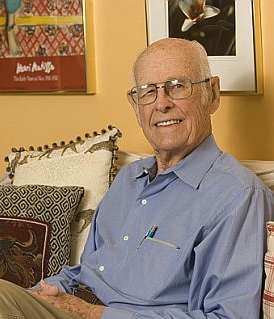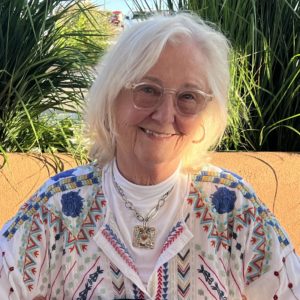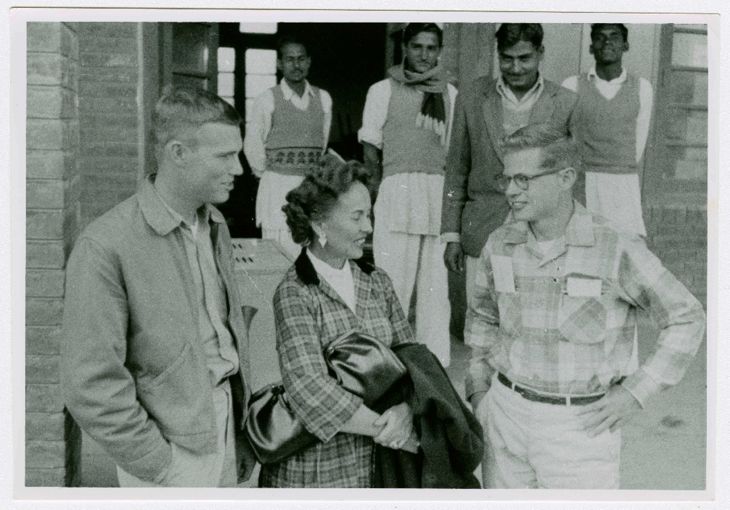PEACE CORPS CHRONICLES
Former CSU faculty member led project with Returned Peace Corps Volunteers
story by Jeff Dodge
published Feb. 20, 2023
Jane Albritton knows a thing or two about the Peace Corps.
The former CSU faculty member led a project to publish four volumes of essays written by Returned Peace Corps Volunteers (RPCVs) and served in the Peace Corps herself in India from 1967 to 1969.
Her book series of writings by RPCVs, to which she contributed an essay of her own, was released in 2011 to mark the 50th anniversary of the founding of the Peace Corps. John Coyne, who is considered one of the top authorities on the history of the Peace Corps, wrote an introduction to Albritton’s book series titled, “Thirty Days That Built the Peace Corps.” In that introduction, Coyne acknowledges CSU’s contribution to the founding of the Peace Corps: winning the federal contract to create a feasibility study for the new program.
“The government contract was won by Maurice (Maury) L. Albertson of Colorado State University, who with one extraordinary assistant, Pauline Birky-Kreutzer, did the early groundwork for Congress on the whole idea of Americans going overseas, not to win wars, but help build societies,” he wrote.
In his introduction Coyne chronicles the Oct. 14, 1960, address by presidential candidate John F. Kennedy on the steps of the Student Union of the University of Michigan, outlining the vision for a Peace Corps program. Coyne witnessed the speech in person when he was a graduate student at the University of Michigan because he was covering it as a part-time news reporter. At the time, it was being proposed by U.S. Rep. Henry Reuss of Wisconsin as a “Point Four Youth Corps.”
Albertson’s role

Maury Albertson, who passed away in 2009, was director of the CSU Research Foundation (CSURF) at the time. Albritton said his tenacity and determination was key to securing the $10,000 federal contract to do the Peace Corps feasibility study.
“This man was irrepressible,” Albritton said of Albertson, who championed CSU’s outreach-focused, land-grant mission in lobbying for the feasibility study. “He infused his optimism into this amorphous idea and came up with an energetic and flexible shape for it that allowed it to grow. He brought with it a land-grant institution’s sensibility and an appreciation for international cooperation.”
He was also speedy: Work on the study began in 1960, and by fall 1961, 400 volunteers were already in the field.
‘Hard to give that dynamic a name’

Albritton, who taught in CSU’s Department of Journalism and Mass Communication, added that Birky-Kreutzer’s hard work was also key to securing and producing the feasibility study. Her memoir, Peace Corps Pioneer: The Perils of Pauline, details the crafting of the feasibility study and of Colorado State’s contributions to Peace Corps’ early days.
“You take this buzzy idea and put Maury’s energy into it, then fold in Pauline Birky-Kreutzer’s attention to detail – and it’s hard to give that dynamic a name,” Albritton said. “Stanford and MIT both wanted to do the feasibility study, but Maury got in there and pestered people in Washington until he got it. It all arose out of Maury’s optimism – he had no Washington, D.C., cynicism.”
Albritton added: “Both Maury’s international experience and his absolute confidence in CSURF’s capabilities suited him to a task that had to be both quickly done and spot on. Sometimes Maury and Pauline’s legacy was – and still is – overshadowed by more charismatic figures that became the face of the Peace Corps and who sold the idea to Congress. I don’t think that fact troubled either of them. They were clear about the significance of their work, moved on to the next all-consuming project, and left it to others to tend to the legacy.”
Albertson was named a Centennial Professor by the Walter Scott, Jr. College of Engineering in 1970 during Colorado State’s Centennial year. In 2006, the university awarded him an honorary doctoral degree for his humanitarian work.

Pauline Birky-Kreutzer (center) with two Peace Corps volunteers in Pakistan in the early 1960s. She served as the first female Peace Corps country director for Pakistan in the early 1960s.
Two years in India
Albritton’s own experience in the Peace Corps is something she still remembers vividly, even 54 years later. Reflecting on the bedrock contributions of Albertson and Birky-Kreutzer, she said the concept that Albertson and founding Peace Corps Director Sargent Shriver developed to have each volunteer serve for a two-year period was both ambitious and crucial to the program’s success. It allowed volunteers to get acquainted with the land, people and customs while sharing their skills in education, health, agriculture, urban planning, skilled trades, forestry, sanitation or technology.
“Two years gives the volunteer time to settle in and get adjusted,” Albritton said. “My mother said that after a year, my letters home started changing. There was much less stress and anxiety because I had begun to understand where I was. Thanks Maury and Pauline for that.”